What’s better than to just have the quintessential Indian style ice cream, Kulfi? A Kulfi Falooda where the kulfi becomes a part of a party of other yum ingredients, and results in a decadently beautiful dessert. This post is about the easiest way of preparing this rich and delicious summer dessert which has kulfi topped with falooda sev, sabja seeds (sweet basil seeds), rose syrup and nuts. This is one of those cold desserts that is very hard to say no to! A loved one by kids as well as adults alike.
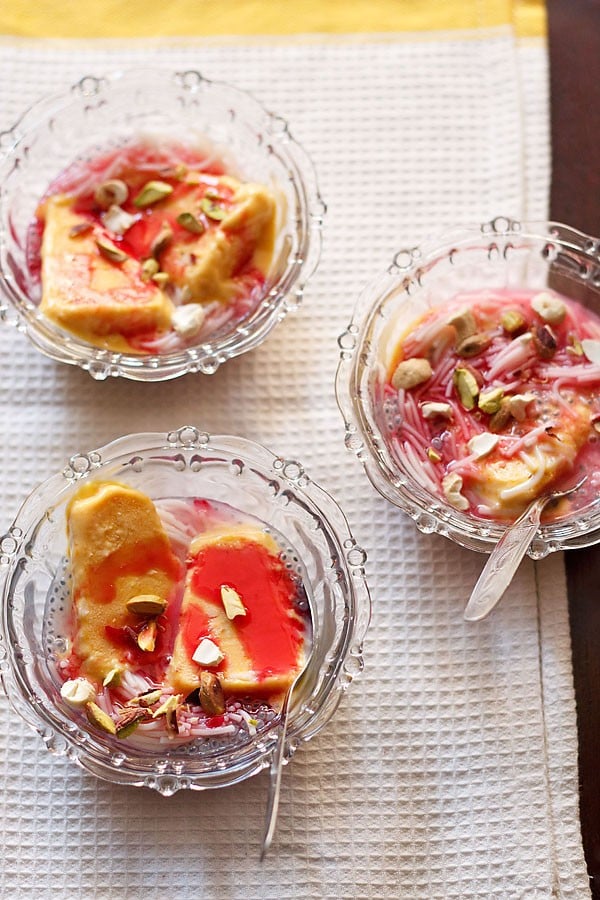
About Kulfi Falooda
Falooda and kulfi are popular in most regions of India. These are ideal for summers as they are refreshing, cooling as well as super tasty.
But the combination of kulfi with falooda in this Kulfi Falooda takes the flavors of both these individual desserts to another level.
Basically, you can refer to a falooda as the Indianized version of a western sundae (as it has different flavors and textures in the form of layers).
However, some of the elements in a falooda may also be liquid. Hence, you have to both eat and sip on the dish as a whole.
But this pair of a Kulfi Falooda is not the regular cross-over of a dessert and beverage that happens in a basic falooda recipe.
It is more of a cold sweet dish where the kulfi plays the major role and is topped with other ingredients including the falooda.
Since the kulfi is what forms the base of this dish, you can get your choice of a flavored kulfi or a plain one and then jazz it up with other elements.
This particular Kulfi Falooda is essentially to let you know how to assemble one. The flavors can be customized as per your likings.
Kulfi Falooda is a delightful, cooling and filling dessert. Along with this, a few popular variants are the Mango Falooda and Kesar Pista Falooda.
As I already mentioned, the difference between a Kulfi Falooda and regular falooda is that the latter is a dessert-drink and can be made with or without ice cream.
Whereas, a Kulfi Falooda is a frozen dessert, topped with falooda sev along with rose syrup, nuts, dry fruits, etc.
The falooda sev that is added in this specific dessert recipe is cornstarch vermicelli. You just have to prepare it as per the instructions on the pack.
As for the kulfi, you can either make it at home or use the one brought from the market. I usually make it with mawa, pista or Mango Kulfi during the hot season.
For its cooling properties, soaked sabja seeds (sweet basil seeds) are also added in this Kulfi Falooda recipe.
You can check this post on How To Use Sabja Seeds. Apart from this, the nuts make it healthier and filling. Once the prep is done, you just have to assemble everything in a serving bowl.
Note that in the stepwise photos below, pista kulfi has been used and the final image of the dish has mango kulfi.
How to make Kulfi Falooda
Preparation
1. Soak ½ tablespoon sabja seeds (sweet basil seeds, tukmaria seeds) in enough water for about 30 minutes or more.
The sabja seeds will become soft and gelatinous after being soaked for a while as seen in the photo below.
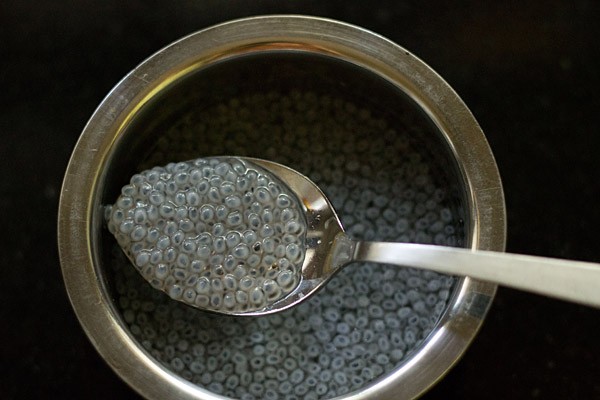
2. While the sabja seeds are soaking, begin to prepare ⅓ cup falooda sev as per the instructions given in the pack. I had to cook it in hot water.
Add water as needed to cook the falooda sev. Cook on medium-low to medium heat.
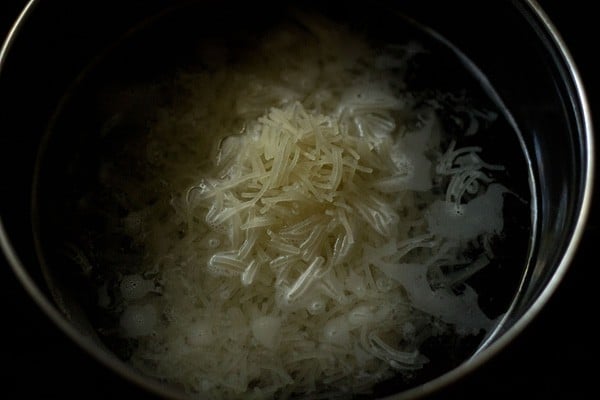
3. Cook till the falooda sev softens.
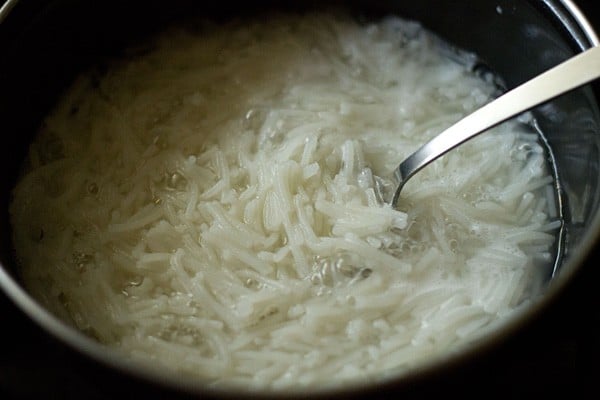
4. Now, strain the cooked falooda sev and rinse in running water. Cover and keep aside.
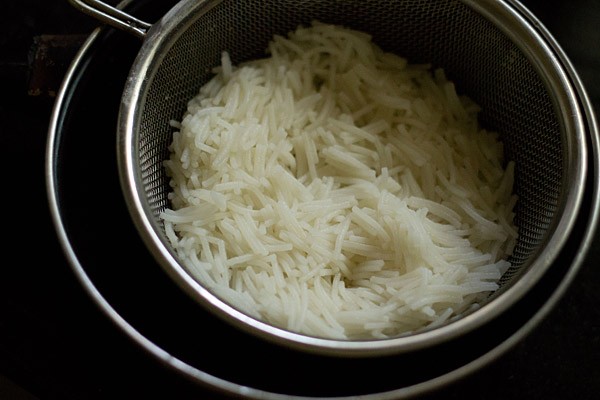
5. Also, strain the sabja seeds after 30 minutes of soaking time and set aside.
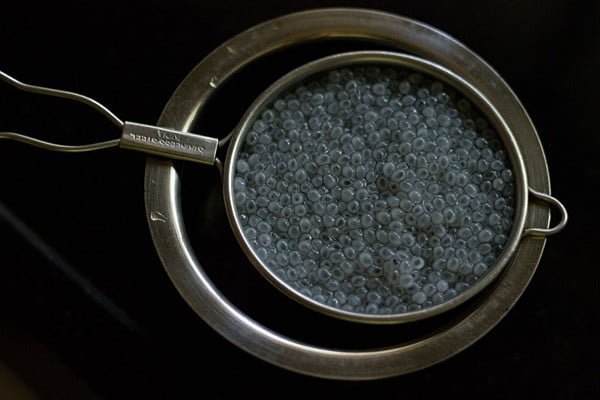
Make Kulfi Falooda
6. Take frozen kulfi in a bowl. You can slice it into halve or small pieces. Due to it being very hot here, the kulfi was melting.
You can also add some malai (clotted cream) or whipping cream if you want. Now, add 1 tablespoon of the soaked and strained sabja seeds.
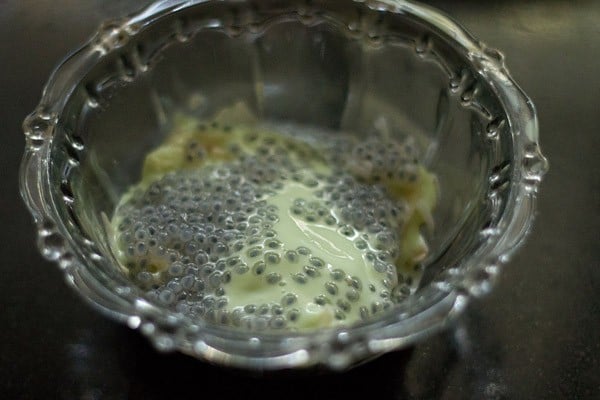
8. Then, add 1 to 1.5 tablespoon of the prepared falooda sev.
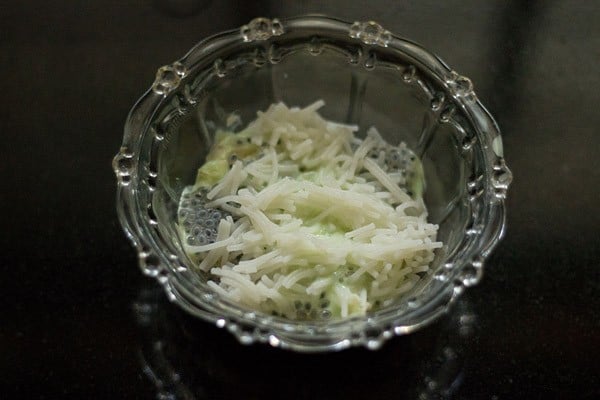
9. Pour some rose syrup, about ½ tablespoon or more if you like.
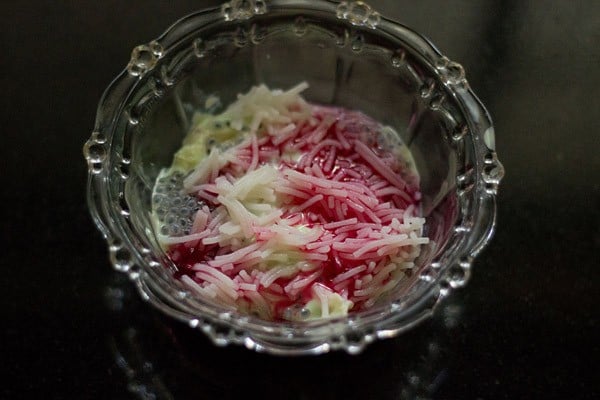
10. Garnish with chopped nuts and dry fruits that you prefer. I have added some chopped cashews and pistachios.
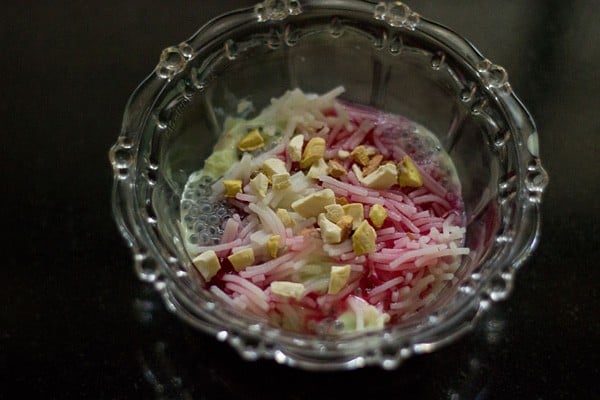
11. Serve Kulfi Falooda immediately. Prepare this way in batches and serve this delicious dessert straightaway.
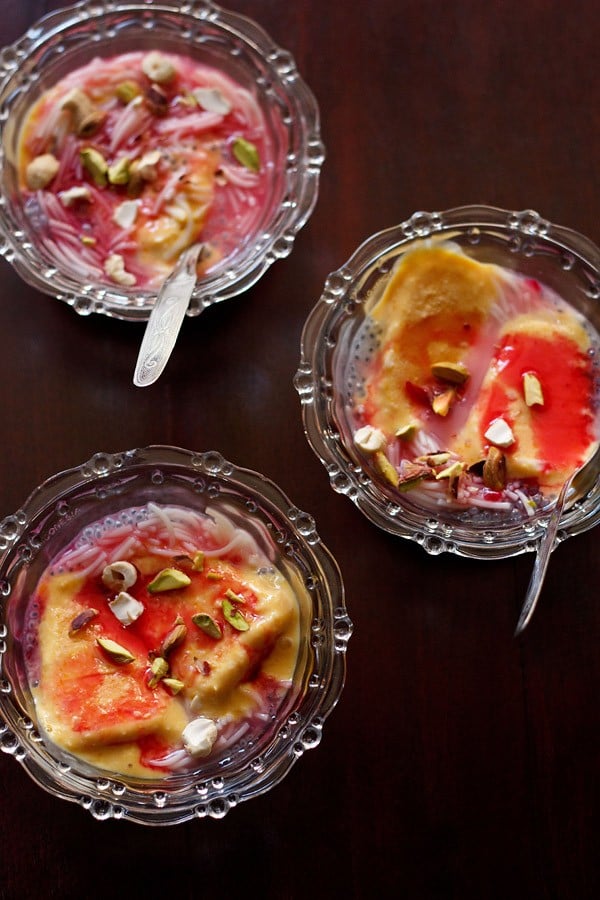
Expert Tips
- If you don’t have falooda sev, then you can use semolina/sooji vermicelli or whole wheat vermicelli instead. Cook them according to the package instructions until they are softened.
- In place of sabja seeds, you can also use chia seeds. Simply soak them in water until they soften. Later strain the soaked chia seeds of all the water and add them to your kulfi falooda.
- Make sure to cook the falooda sev according to the package instructions. Some get done by just soaking in warm water whereas some require cooking.
- You can use your choice of kulfi for this recipe. Some options are malai kulfi, chocolate kulfi, paan kulfi, kesar kulfi, orange kulfi, pista kulfi, mawa kulfi as well as mango kulfi.
- At the time of serving, you can also add some malai (clotted cream) or fresh cream on top of the kulfi to make it richer.
- You can even add some tutti frutti, glazed cherries or chopped fruits as a garnish in this Kulfi Falooda.
More Beverage Recipes To Try!
Beverages
Beverages
Please be sure to rate the recipe in the recipe card or leave a comment below if you have made it. For more vegetarian inspirations, Sign Up for my emails or follow me on Instagram, Youtube, Facebook, Pinterest or Twitter.
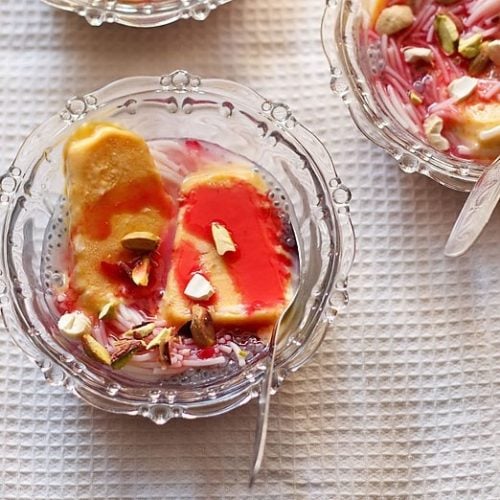
Kulfi Falooda
Ingredients
- ½ tablespoon sabja seeds (sweet basil seeds, falooda seeds, tukmaria seeds)
- water as required to soak sabja seeds
- ⅓ cup falooda sev
- water as needed to cook falooda sev
- 4 kulfi – preferred flavor
- 2 tablespoons rose syrup – can swap with khus syrup
- 1 to 2 tablespoons pistachios – chopped
- 1 to 2 tablespoons cashews – chopped, can add almond slivers instead
Instructions
- Soak the sabja seeds in enough water for 30 minutes.
- Once they swell, strain and keep aside. You can also refrigerate the soaked seeds.
- Prepare the falooda sev according to package instructions.
- If cooking them then cook on medium-low to medium heat adding water as needed.
- Once the falooda sev are softened, rinse them in water. Drain any extra water and keep them aside. Let them cool completely.
- Remove the kulfi from the moulds. Slice them into 2 or 4 slices. Place each kulfi with its slices in a serving bowl or a small plate.
- Add 1 tablespoon sabja seeds on top of the sliced kulfi pieces in the bowl.
- To with 1 to 1.5 tablespoons of the cooked falooda sev.
- Pour ½ tablespoon of rose syrup. Sprinkle the chopped nuts or preferred dry fruits.
- Serve immediately.
Notes
- If you don’t have falooda sev, then you can use semolina/sooji vermicelli or whole wheat vermicelli instead.
- Instead of sweet basil seeds, easily swap with chia seeds.
- You can use your choice of kulfi for this recipe. I like to make it with pista kulfi, mawa kulfi as well as mango kulfi.
- At the time of serving, you can also add some malai (clotted cream) or fresh cream on top of the kulfi to make it richer.
- You can even add some tutti frutti or glazed red cherries or chopped fruits as a garnish.
Nutrition Info (Approximate Values)
This Kulfi Falooda recipe from the archives first published in June 2014 has been updated and republished on May 2023.
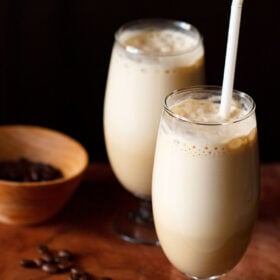
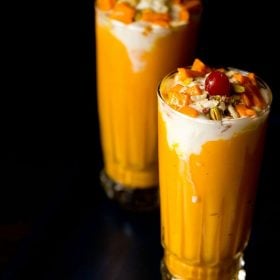
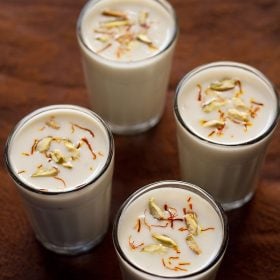
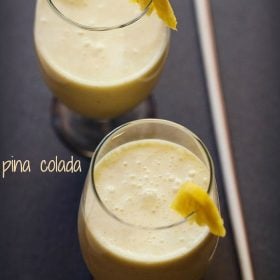
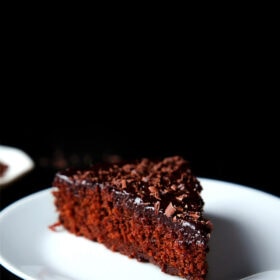
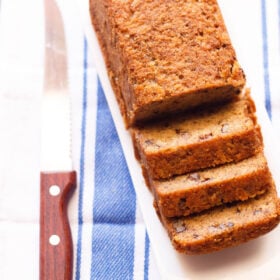
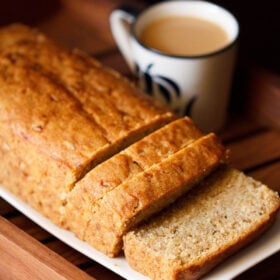
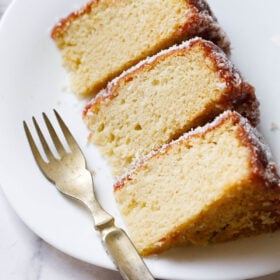








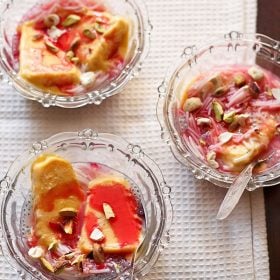
Hi Dassana,
Where is the rabdi in the falooda??? 😀 no fun without rabdi.
Nevertheless your recipes and photos are always a delight 🙂 keep it up
grace, in mumbai, they don’t add rabdi in falooda. in fact there is another dish served in some hotels and restaurants, which is called as rabdi falooda or special falooda. but in the regular falooda with ice cream rabdi is not added. this recipe is inspired from my growing up days in mumbai and this is how the falooda was served in chowpatty beach and juhu beach 🙂
thank you 🙂
Tried your kulfi recipe and I am glad I did. Everytime it just tastes better than before ? Next is this Falooda experiment ☺️ Cheers Dasana
thanks amrutha for sharing this positive feedback on kulfi. i am sure you will like falooda too.
looks yummy :p
Hi Dassanna Amit,
This is a great blog on food and I am loving it. I was going through your goan section for vegetarian food as i have been missing them since I left goa. I am an Andhrite but practically schooled and educated in Goa. Your veg posting really makes my mouth go back in nostalgic.
I have observed your enthusiasm on creating the receipes, cooking them, photographing them and posting them. Great work.
I have seen this Pessarattu /Moog Dosa and have observations(my version only) to make.
1) In Andhra Pessarattu is made with whole green gram only and not with split at least what my granny says.
2) Moong needs to be be kept for fermenting atleast 4 hours before making into a crepe. My Mother usually does it soon after grinding. If you use a grinder with a stone,its okay; but if you are using a mixer, then you must rest else the batter cannot spread out properly. My wife uses the latter method. she goes to ferment it for 8 hours and finishes off all the batter in one serving.
3) Moong dosa is a morning breakfast dish. In Andrapradesh, people and even hotels do not serve in the evening and absolutely a no no for night serving. Moong digests slowly and hence the reason.
4)Upma as a choice is recent phenemenon and was introduced to it by my wife. My Mother and Granny use the traditional version. You fry onions,green chillies, fine ginger pieces, jeera in little oil till slightly brown. add the filling just like potato filling in normal dosa. I love both versions but i prefer the onion version as i am used to it since childhood. Pessarattu with Upma is called MLA Persarattu. it was introduced in AndhraBhavan in Delhi for hungry MLA’s/MP’s when onion prices shooted up in 80’s.
Once again, great blog..keep blogging
mmm..i need to prepare moogachibhaji today…..
hi madhav, firstly thanks for appreciating the blog and the recipes. secondly a big thanks for giving so much info about pessarattu. i have copy pasted your comment and in the coming days will try to add all the info, tips and suggestions you have shared on the pessarattu post. i make this dosa both with whole mung dal as well as with the split mung dal. i will also make the fermented version with the onions, ginger and chilies. fermented will taste much better than the unfermented one. thanks once again for the detailed info.
I love Kulfi-Falooda but never tried making it at home. This looks superb!
thanks meena